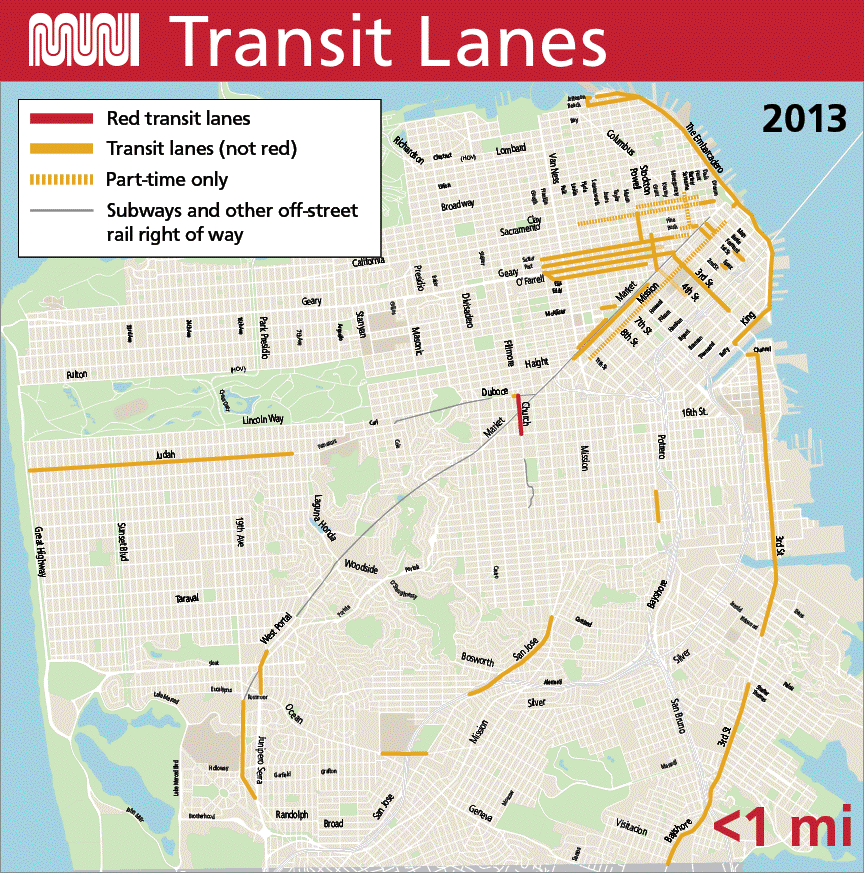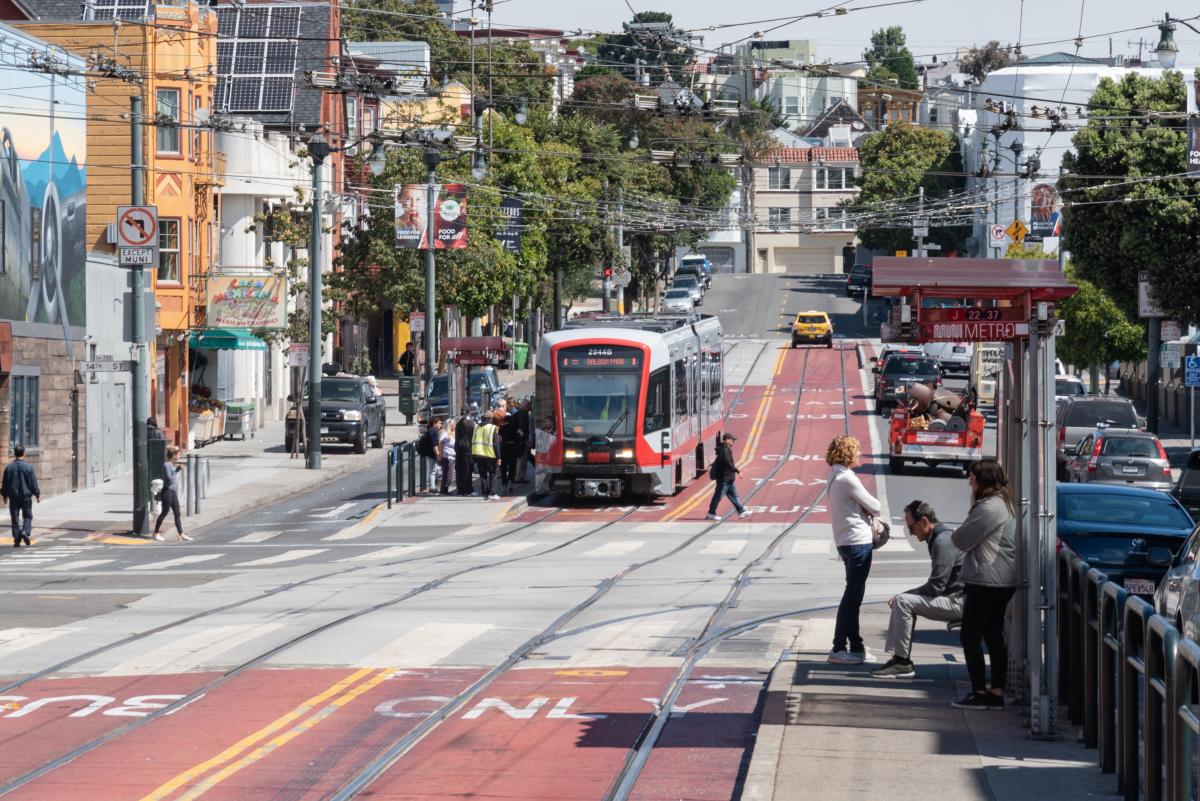By Cassie Halls

An animated map showing the expansion of red transit lanes in San Francisco. View as a PDF. Accessible version of the expansion of red transit lanes:
Red Transit Lanes Over Time in San Francisco from 2013 to 2023
There is nothing quite like looking out the window at gridlock traffic while your bus coasts down a red transit lane. This may feel like an “only in San Francisco” pleasure – after all, San Francisco was one of the first U.S. cities to “roll out the red carpet” by painting bus lanes red. But red transit lanes have now become a popular way to keep buses out of traffic in more than 25 cities across the country.
The SFMTA is celebrating a decade since the installation of San Francisco’s first red transit lane on Church Street on March 23, 2013. You can help us celebrate by riding that first red transit lane between Duboce and 16th Streets on Muni’s 22 Fillmore and J Church along with thousands of other weekday riders. As you whiz past traffic, you may feel the estimated 14% time savings afforded by the red color.
If you drive, help us celebrate by keeping transit lanes clear. Remember, double parking in transit lanes is camera enforced. Transit lanes are an essential tool to keep Muni moving on San Francisco’s busy streets.
Dedicated transit lanes started popping up in the city as early as the 1970s following the adoption of the city’s Transit-First Policy (which happens to be turning 50 this month). As of 2023, over 20 lane miles of transit lanes now also have the red treatment, in addition to 55 miles of transit and bus/HOV lanes without red paint.

J Church train using red transit lanes on Church at Market Street.
Although often the most visible, transit lanes are one of more than 20 tools in our toolbox to improve transit reliability and reduce delays. With Muni Forward, we’ve built more than 80 miles of transit corridor reliability improvements to keep Muni moving — with upgrades like bus bulbs for faster boarding and traffic signals that stay green for transit.
As an early adopter of red transit lanes, the SFMTA helped lay the groundwork to change federal guidelines to make it easier to paint lanes red. This is because red colorization has led to a 55% improvement in motorist compliance and is a cost-effective way to reduce delays. We have to say they’re looking great for their age!
We know that despite our best efforts, Muni buses and trains are sometimes stuck in traffic and transit lanes are occasionally blocked. That is why we continue to innovate to bring improvements to our riders. Last year we colorized six miles of transit lanes in the Van Ness Improvement Project, Geary Boulevard Improvement Project, and along Mission Street in SoMa, 4th Street and Stockton Street. We also continue to install Muni Forward transit priority projects across the city and push for further compliance improvements through an education campaign for motorists. The SFMTA was also recently awarded a state grant to deploy new next-generation camera technology as a part of the transit lane enforcement program.
Stay tuned for more red transit lanes and other reliability improvements in the year ahead.
Published March 22, 2023 at 02:35AM
https://ift.tt/xic1UqV
Comments